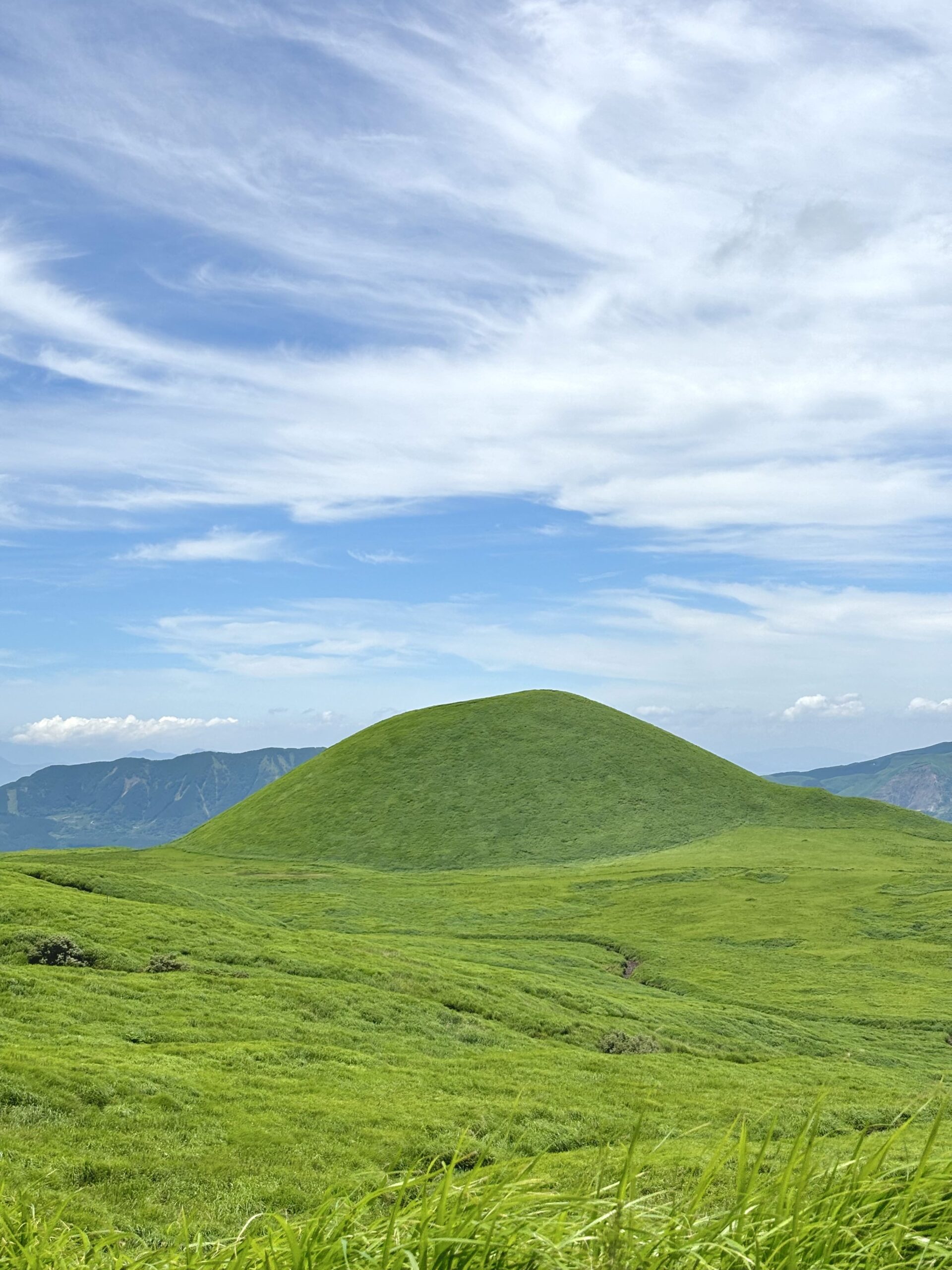
The Aso Grasslands
Protecting the Grasslands for a Sustainable future
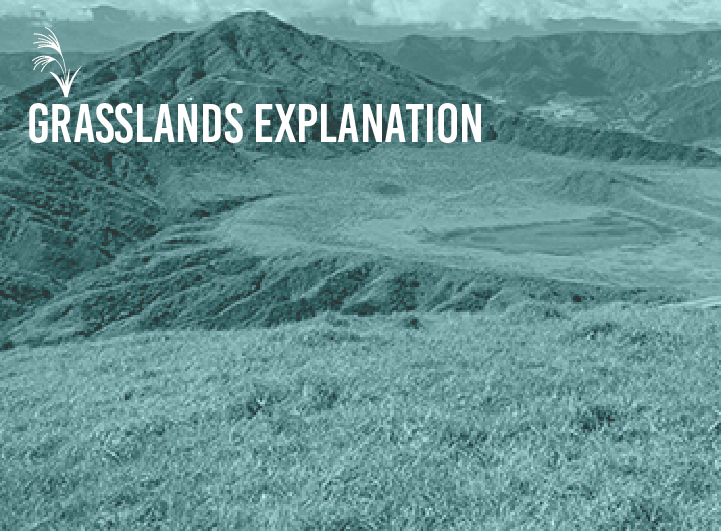
One of Aso’s most iconic landscapes is its vast grasslands, the largest of their kind in Japan. These grasslands, known as Bokuya, are believed to have been dominated by susuki (Japanese silver grass) for over 13,000 years. A vital regional resource that supports the local way of life. Locals take various intiatives to maintain and sustain the landscape.

The Bokuya guide program allows for a truly exclusive experience. Access to pristine grasslands normally inaccessible to the public. With the majestic Aso landscape as your backdrop, enjoy unforgettable adventures including cycling and trekking. It’s a rare chance to connect with nature in a way few ever get to experience.
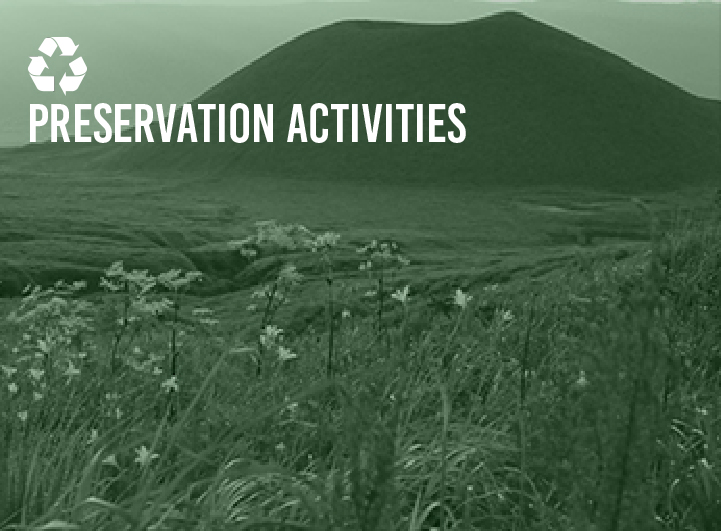
A grassland conservation fee is included in all activity fees helping protect and preserve these beautiful landscapes. It supports essential activities like maintenance and the upkeep of the pastures especially through traditional grassland burning, a key practice in sustaining the natural environment. Controlled burning is a tradition said to have continued for over 1,000 years.
The Four Blessings
1. Biodiversity – Protecting habitats for wildlife
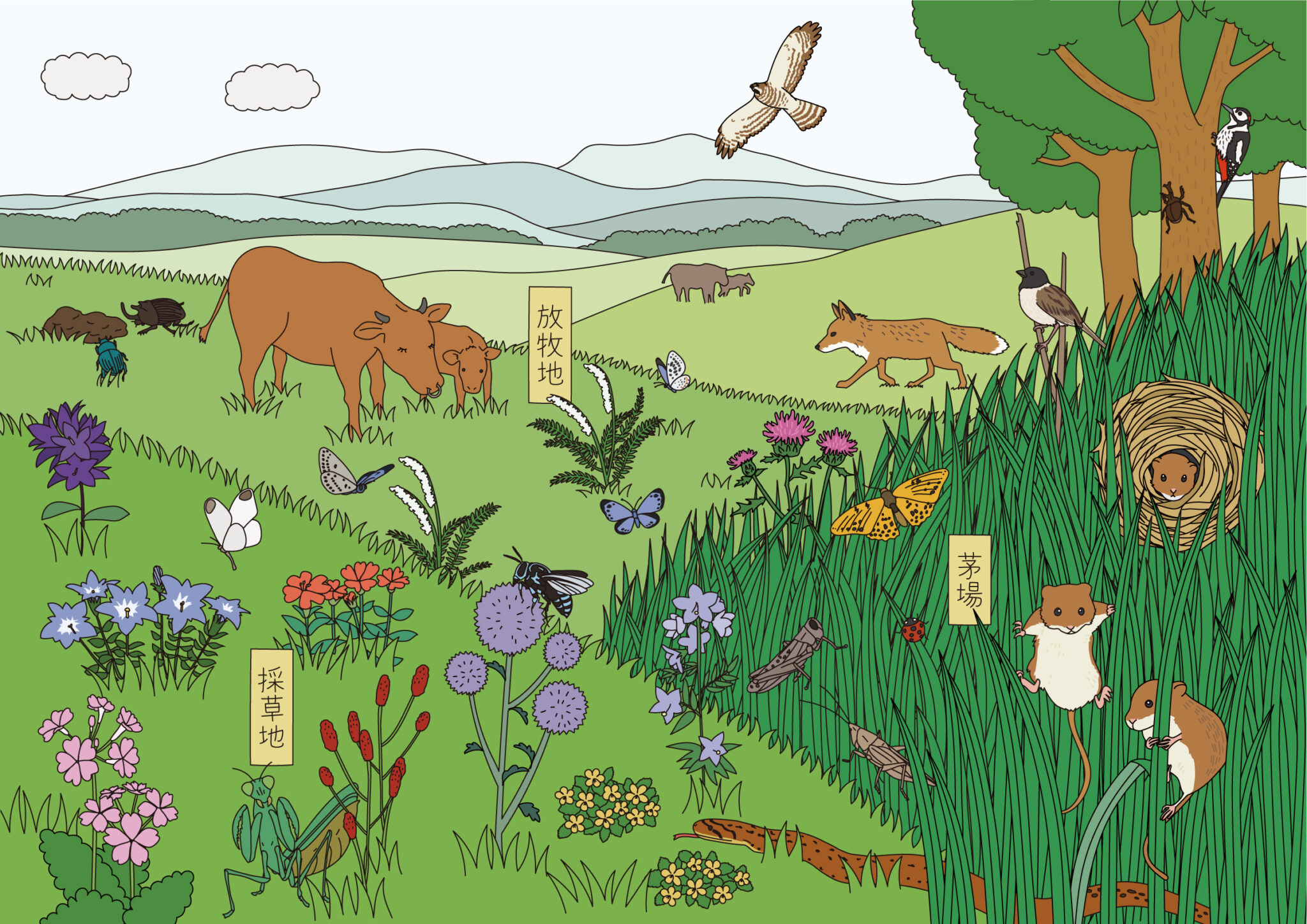
Approximately 600 species of rare plants and insects, including endangered species thrive naturally in the Aso grasslands. These plants support a food chain that includes the insects and herbivores that feed on them, as well as the carnivores that prey on those animals. Of the 117 butterfly species found in Kumamoto Prefecture, 109 can be found within the Aso grasslands, earning it the nickname “Paradise of Butterflies.”
2. Carbon sequestration – Storing carbon
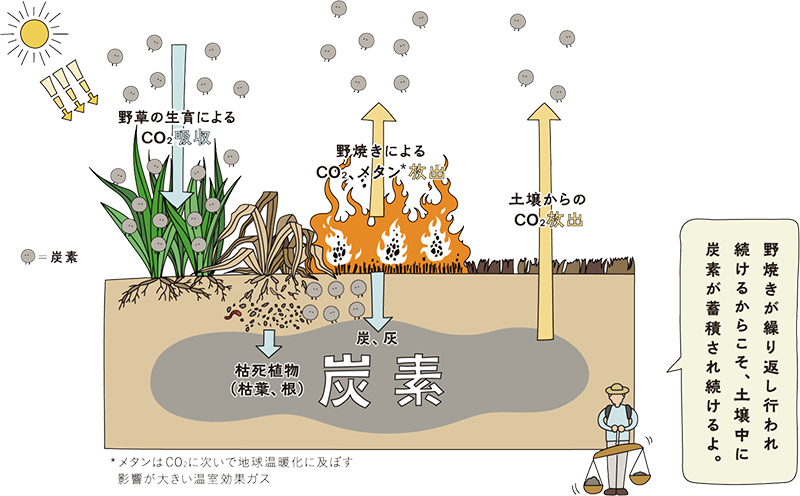
In Aso, controlled grassland burning (noyaki) has been estimated to date back around 10,000 years ago. Through repeated burning over the centuries, a massive amount of carbon has accumulated in the soil beneath the grasslands. These burned grasslands store carbon at a rate 1.7 times greater than the total annual CO₂ emissions from all households in the Aso region. This helps to make a significant contribution in the fight against global warming.
3. Water conservation – Nurturing the sources
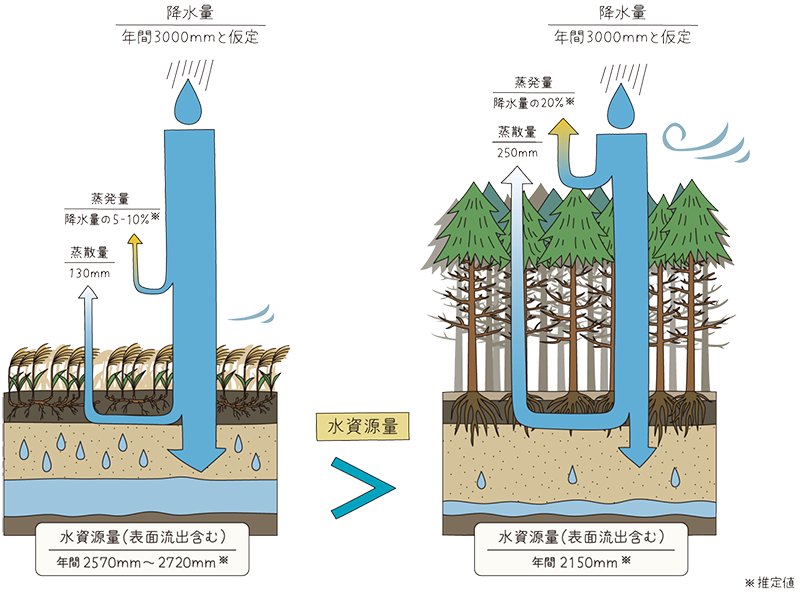
Grasslands act like natural water reservoirs. They store rainwater in the soil and release it slowly into rivers. This prevents sudden runoff during heavy rains and ensures a steady water flow even during dry periods. Recent studies have shown that grasslands are even more effective at this than forests.
Aso receives about 3,000 mm of rainfall annually, twice the national average. Rain that soaks into the foothills of the outer rim and the Aso Five Peaks becomes six rivers, supporting the water needs of approximately 5 million people. This is why Aso is known as “the water reservoir of Kyushu.”
4. Disaster reduction – Mitigate the damage
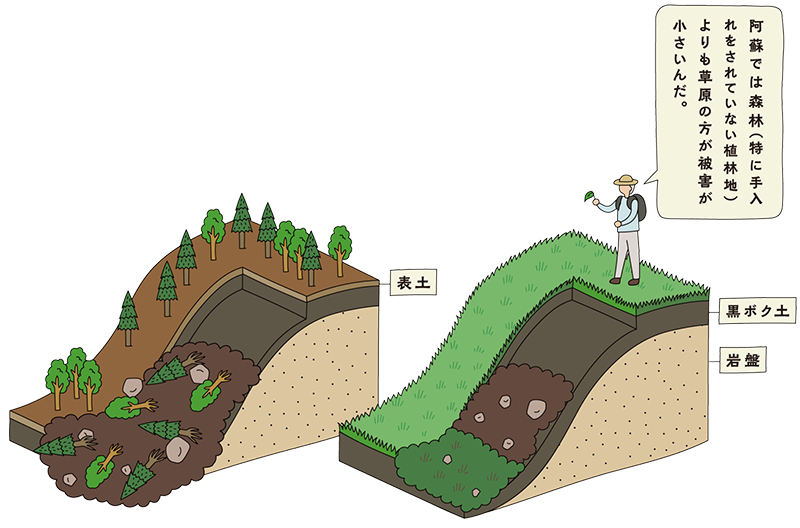
Much of the Aso region consists of soil formed from accumulated volcanic ash, making it an area prone to landslides during heavy rainfall. Because there is hard volcanic bedrock beneath the volcanic ash soil, tree roots tend to grow shallowly, and in many places, forests are unable to prevent slope failure. Furthermore, when plantation forests collapse, both soil and trees fall together, increasing the risk of severe damage. In contrast, in grassland areas, the extent of damage tends to be much smaller.

